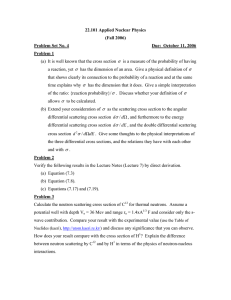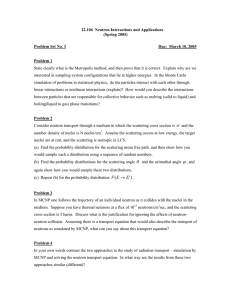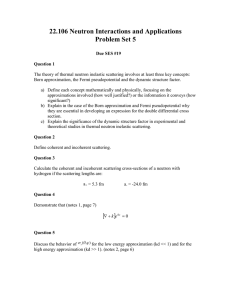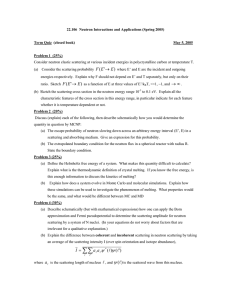22.54 Neutron Interactions and Applications (Spring 2002) Problem Set No. 2
advertisement
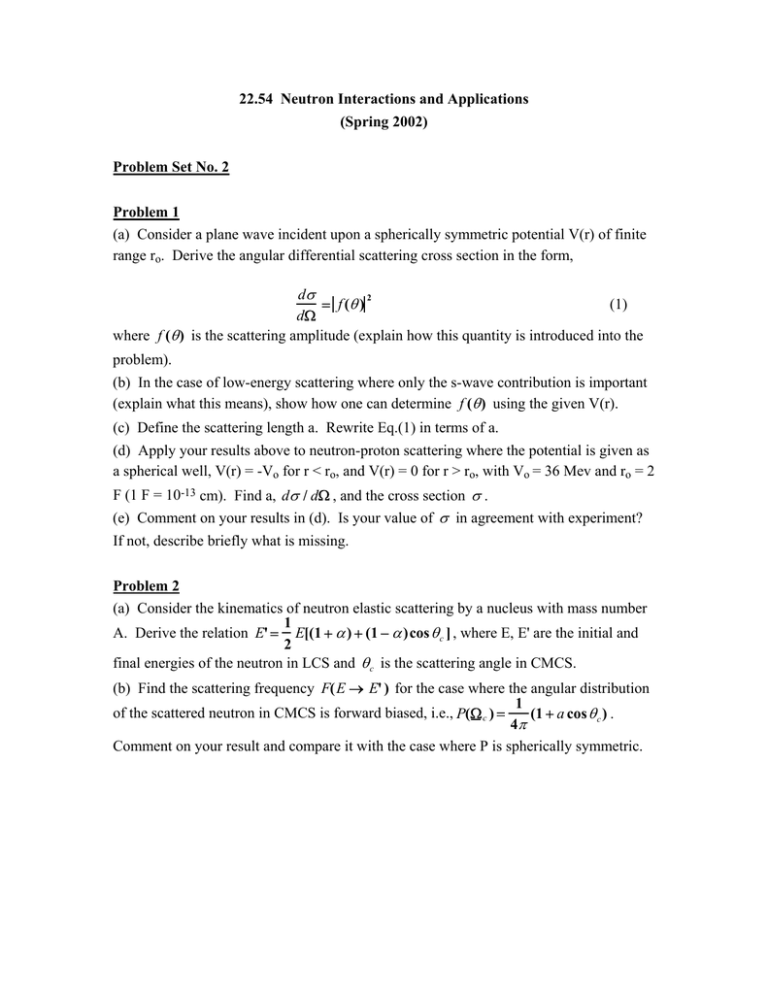
22.54 Neutron Interactions and Applications (Spring 2002) Problem Set No. 2 Problem 1 (a) Consider a plane wave incident upon a spherically symmetric potential V(r) of finite range ro. Derive the angular differential scattering cross section in the form, dσ 2 = f (θ ) (1) dΩ where f (θ ) is the scattering amplitude (explain how this quantity is introduced into the problem). (b) In the case of low-energy scattering where only the s-wave contribution is important (explain what this means), show how one can determine f (θ ) using the given V(r). (c) Define the scattering length a. Rewrite Eq.(1) in terms of a. (d) Apply your results above to neutron-proton scattering where the potential is given as a spherical well, V(r) = -Vo for r < ro, and V(r) = 0 for r > ro, with Vo = 36 Mev and ro = 2 F (1 F = 10-13 cm). Find a, dσ / dΩ , and the cross section σ . (e) Comment on your results in (d). Is your value of σ in agreement with experiment? If not, describe briefly what is missing. Problem 2 (a) Consider the kinematics of neutron elastic scattering by a nucleus with mass number 1 A. Derive the relation E' = E[(1 + α ) + (1 − α )cos θ c ] , where E, E' are the initial and 2 final energies of the neutron in LCS and θ c is the scattering angle in CMCS. (b) Find the scattering frequency F(E → E' ) for the case where the angular distribution 1 of the scattered neutron in CMCS is forward biased, i.e., P(Ω c ) = (1 + a cos θ c ) . 4π Comment on your result and compare it with the case where P is spherically symmetric.






